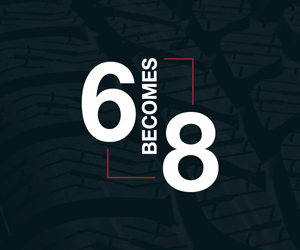
Fishing with Dr Dazza: Where to catch Cobia
Published 5:00am 18 January 2023

 Words by Kylie Knight
Words by Kylie Knight
Cobia or black kingfish (Rachycentron canadam) is the only species in the family Rachycentridae and is a prized angling and table fish.
The species occurs throughout Queensland waters including offshore waters, in association with coral and rocky reefs, and inshore areas such as Moreton Bay.
Anglers occasionally confuse Cobia with sucker fish or remora. The two species are very similar in colouration and shape, but the remora is easily distinguished by the presence of the disc shaped sucker on their head. Many an angler has hooked what they thought to be a cobia only to be disappointed to find that it is a remora when they have bought it closer to the boat.
Although they are often considered a pelagic species and are frequently found near the water surface, cobia feed throughout the water column and on the seafloor. Like sharks, but unlike most bony fish, cobia lack a swimbladder which is the organ that aids maintaining buoyancy. This means that if they stop swimming they sink.
Cobia are opportunistic feeders - both a scavenger and a predator. They are sometimes colloquially referred to as “crab eaters” due to their habit of frequently consuming crabs and they also consume stingrays.

Where to find Cobia
They are often found in association with structures such as shipping beacons and fish aggregating devices (FADs). The shipping beacons in the northern part of Moreton Bay are well-known locations to catch them.
Cobia are also found swimming with large animals such as whales, sharks and marine turtles.
Juvenile cobia are increasingly being caught at inshore locations including the Redcliffe foreshore and Shorncliffe Pier, and there have also been adults caught at such locations.
In Queensland, Cobia grow to a maximum length of about 160cm and 55kg. Growth is rapid. with females growing quicker than males. Female cobia reach about 75cm in two years and this is the size at which about 50 per cent of female fish are mature. It only takes about three years for cobia to reach 1m in length.
The rapid growth rate contributes to the suitability of cobia for aquaculture production, and they are an increasingly important aquaculture species globally. Growth rates under aquaculture conditions can be 5kg per year and they are relatively easy to breed and feed. Expect to see more farmed cobia sold in restaurants and fish shops during the next decade.
Cobia are generally solitary but may form small groups at times. They can however form much larger aggregations for spawning. Although not venomous, cobia have a series of small stout spines which can inflict a painful wound if not handled carefully.
The minimum legal size for cobia in Queensland is 75cm and the in-possession limit is two per person.
Dr Daryl McPhee is an Associate Professor of Environmental Sciences at Bond University
Related Stories
Top Stories

Rotarians ‘adopt’ Redcliffe waterway
The Rotary Club of Redcliffe Sunrise has ‘adopted’ Redcliffe’s Humpybong Creek in a bid to improve water quality so people can eventually swim in it.
Gymnast reaches new heights


Popular Stories

Parenting tips: family road trips
Whether it's a day trip or a longer adventure, family road trips can help everyone build memories and spend quality time together. But let’s face it, car trips can test anyone’s patience, even before you make it to the end of the driveway! Here's some expert tips from Triple P Parenting

US tournament’s in Tia's sights
A Clontarf Beach State School pupil has qualified for the Babe Ruth World Series Softball and Baseball Tournament in the United States with the Aussie Drop Bears U12s. Here's the story

Jessika's journey from Maccas to clinical trials
More than 300 students graduated from UniSC’s Moreton Bay and Caboolture campuses this month – including a former McDonald’s manager. Picture gallery, time lapse videos *FREE TO READ **












